Why don't gardenia blossom? what's the reason? how to solve it?
Why don't gardenia blossom? what's the reason? how to solve it?
Reason 1: inappropriate lighting
Gardenia does not like strong light, but can not do without light, Jiaozi flowers like semi-overcast in summer and maintain in places with sufficient indoor light in winter. If the light is too strong or too weak, it will affect the blooming of the mast flower.
Reason 2: serious diseases and insect pests
When the disease and insect pests are serious, the gardenia plant is damaged, and the flower buds fall off by the disease and insect pests. Therefore, we should pay attention to insect control in the planting process.
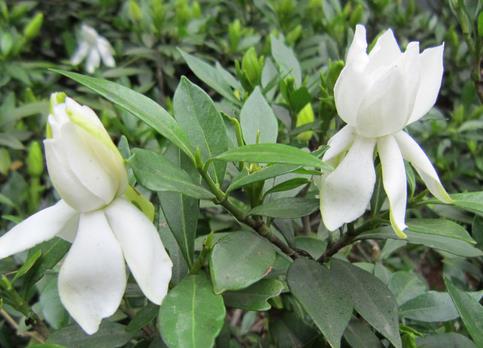
Reason 3: no pruning for a long time
Gardenia branches are messy, long branches grow vigorously, disease and insect branches will also consume a lot of nutrients, when the branches are too tight, the leaves can not all carry out photosynthesis, but consume nutrients, which also leads to gardenia flowers do not blossom.
Reason 4: improper water and fertilizer
During the growth period, excessive water and fertilizer caused plant growth, reproductive growth did not get enough nutrients, affecting the formation of flower buds, resulting in no flowering or few flowering, even if it could blossom, it was easy to drop flowers and buds. Excessive application of nitrogen fertilizer and lack of phosphorus and potassium fertilizer will affect flower bud formation. Therefore, attention should be paid to the application of flower fertilizer with more phosphorus and potassium fertilizer in the period of flower bud differentiation.
Reason 5: high salt and alkali content in soil
Jiaozi flowers like slightly acidic soil. The soil in the north is high in salt, so it will suddenly be alkaline, so planting will also lead to plant yellowing, which will eventually affect flowering. So it can be suddenly acidified before planting. It is better for the growth of gardenia.
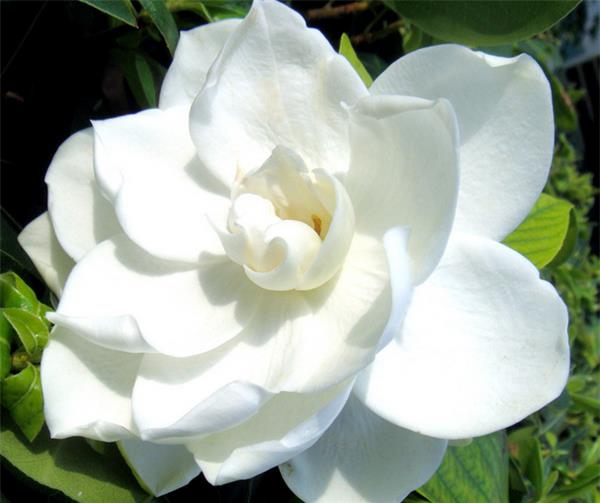
The reason for the habit of Gardenia jasminoides
Gardenia is a relatively delicate plant, which has special requirements for soil, sunlight, temperature and water. What is easy for most people to ignore is that gardenia likes acid, and if the acidity of the soil is not enough, it will be difficult for the roots to absorb nutrients, no matter how much fertilizer is applied, so you must first understand the acidity of the soil. You might as well take some soil samples and ask the horticultural center to test them for you. Many large-scale horticultural centers offer this kind of free service. Generally speaking, you can use acid fertilizer to supply nutrients on the one hand and adjust the pH of the soil on the other. The acid fertilizer brand Holytone sold by the horticultural center can meet the needs of gardenia.
Gardenia soil should maintain proper humidity, especially when the summer flowering season comes, it should be more diligent in applying water. The climate in San Diego where you live is relatively dry, so you need to pay special attention to watering. In addition, gardenia is also very demanding temperature requirements, night temperature below 60 degrees Fahrenheit, daily temperature of more than 80 degrees, will make it lethargic. In cold areas, gardenias are regarded as potted plants and must be moved indoors in winter. Although San Diego can plant gardenias in the yard, it is best to choose shaded places in the afternoon to reduce the harm of hot sun and high temperature.
At the same time, special attention should be paid to the timing of pruning gardenia, because the flowers are all blooming on the new branches of the same year, if they are not pruned over the years, the old branches are too dense and the new branches are too few, which will also affect the number of flowers, preferably in the early spring to stimulate the growth of new buds.
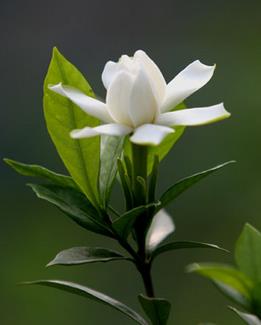
Culture method of why gardenia doesn't bloom
1. Soil: it is suitable to be cultivated in humus-rich and fertile acidic soil, which is the key to the successful planting of families in the north. Generally, rotten leaf soil can be used to add 1 portion of rotten bean cake fertilizer, mixed with a certain amount of ferrous sulfate, or drenched with 0.2% ferrous sulfate or alum fertilizer water for 3 to 5 times.
2. Cultivation: when planting with cuttings and striped seedlings, the root system of the plant should be fully extended, and the gap in the root system should be filled with fine soil. the density of the filled soil is about 85%, and attention should be paid to the tightening and loosening of the soil, and the depth is about 1 cm above the root system. After planting, it is advisable to pour water through the pot bottom in time.
3. Gardenia requires a large amount of air humidity. Northern families can put clear water in the basin cushion and place a thin plate (about 3 cm). It is appropriate for the water in the basin not to pass the thin plate, and the flowerpot can be put on the thin plate, and you should pay attention to adding water frequently. The principle of watering is dry and thoroughly watered with Rain Water, snow water or fermented rice water. If it is tap water, it should be placed for 2 to 3 days before use. Water containing 0.2% ferrous sulfate or apply alum fertilizer water every 7 to 10 days during the growing period. Gardenia in summer should be maintained in places with scattered light under the tree shade, and often watering and foliar spraying in early spring, summer and autumn to increase humidity. Winter should be placed in the sun, stop fertilization, watering should not be too much, you can often use water close to room temperature to irrigate branches and leaves to keep the leaves clean, especially in rooms with heating in the north. Do not put the flowerpot on the front of the radiator or air conditioner to avoid dehydration of the leaves.
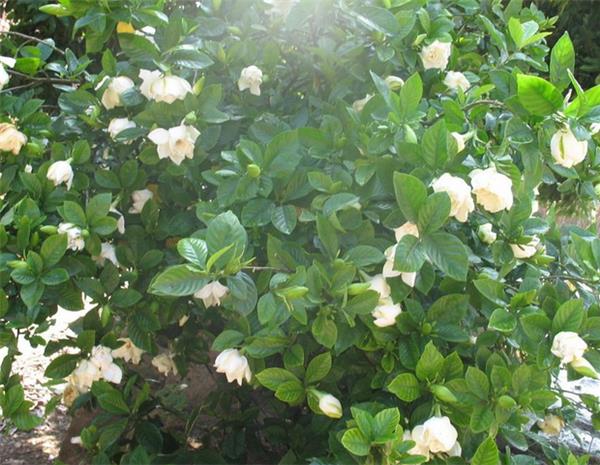
4. Shell insects, red spiders and soot disease should occur in gardenia flower when it is high temperature and poor ventilation in summer. 1000 times of dimethoate EC can be sprayed to prevent shell insects, 40% of triamcinofol EC 1000 to 1500 times to control red spiders, but also can reduce the incidence of soot disease, families for the sake of safety can be sprayed with detergent, but also has a certain effect.
5. Change the basin: generally turn the basin once in 1 to 2 years, and the best in spring. In order to effectively prevent the basins from being alkalized, turn the basin once a year, buckle the basin before changing the basin, and buckle the basin when it is slightly loose after the basin is dry. Generally stop watering for about 10 days. When changing the basin, cut off part of the roots, such as disease and insect roots, too numerous roots, and then plant.
6. It is generally carried out in spring, cutting off overlong branches, weak branches and other random branches that affect the plant shape, so as to keep the plant shape graceful. Gardenia is the top flower, and the top coring can be carried out appropriately in the growing season to promote the growth of flower branches and increase the number of flowers.
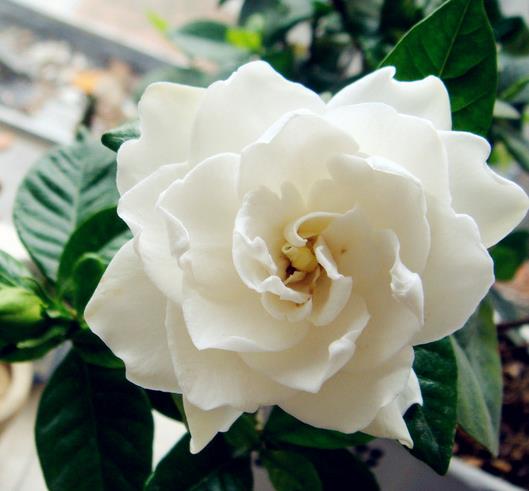
Gardenia can be carried out in spring, summer and autumn, but the survival rate is higher from March to April in spring. When cutting, cut 1-2-year-old branches from the robust mother plant, cut into cuttings of about 20 cm, each section must have more than 3 nodes, cut off the lower end leaves and then put the lower end of the cut into 500ppm rooting powder solution and soak for 15 seconds, take out a little dry solution and then insert it. Before insertion, draw a line on the repaired seedbed according to the row distance of 10 meters × 7 meters, punch holes in the point with a small stick, insert the 2cm 3 of the cuttings into the hole, water and moisturize after compaction with the surrounding soil, and carry out weeding and topdressing management after survival. When the seedling grows to about 50 meters, it can be planted out of the nursery.
4. Shell insects, red spiders and soot disease should occur in gardenia flower when it is high temperature and poor ventilation in summer. 1000 times of dimethoate EC can be sprayed to prevent shell insects, 40% of triamcinofol EC 1000 to 1500 times to control red spiders, but also can reduce the incidence of soot disease, families for the sake of safety can be sprayed with detergent, but also has a certain effect.
5. Change the basin: generally turn the basin once in 1 to 2 years, and the best in spring. In order to effectively prevent the basins from being alkalized, turn the basin once a year, buckle the basin before changing the basin, and buckle the basin when it is slightly loose after the basin is dry. Generally stop watering for about 10 days. When changing the basin, cut off part of the roots, such as disease and insect roots, too numerous roots, and then plant.
6. It is generally carried out in spring, cutting off overlong branches, weak branches and other random branches that affect the plant shape, so as to keep the plant shape graceful. Gardenia is the top flower, and the top coring can be carried out appropriately in the growing season to promote the growth of flower branches and increase the number of flowers.

Gardenia can be carried out in spring, summer and autumn, but the survival rate is higher from March to April in spring. When cutting, cut 1-2-year-old branches from the robust mother plant, cut into cuttings of about 20 cm, each section must have more than 3 nodes, cut off the lower end leaves and then put the lower end of the cut into 500ppm rooting powder solution and soak for 15 seconds, take out a little dry solution and then insert it. Before insertion, draw a line on the repaired seedbed according to the row distance of 10 meters × 7 meters, punch holes in the point with a small stick, insert the 2cm 3 of the cuttings into the hole, water and moisturize after compaction with the surrounding soil, and carry out weeding and topdressing management after survival. When the seedling grows to about 50 meters, it can be planted out of the nursery.
Related
- Wuhan Hospital Iron Tree Blooming Result Was Instantly Frightened by the Gardener Master
- Which variety of camellia is the most fragrant and best? Which one do you like best?
- What is the small blue coat, the breeding methods and matters needing attention of the succulent plant
- Dormancy time and maintenance management of succulent plants during dormancy
- Minas succulent how to raise, Minas succulent plant pictures
- What are the varieties of winter succulent plants
- How to raise succulent plants in twelve rolls? let's take a look at some experience of breeding twelve rolls.
- Attention should be paid to water control for succulent plants during dormant period (winter and summer)
- Watering experience of twelve rolls of succulent plants
- Techniques for fertilizing succulent plants. An article will let you know how to fertilize succulent plants.



